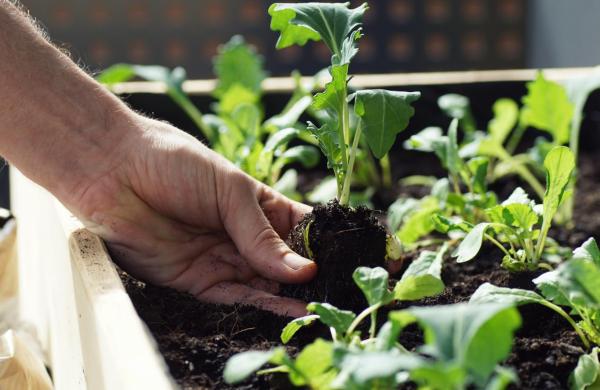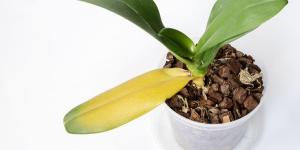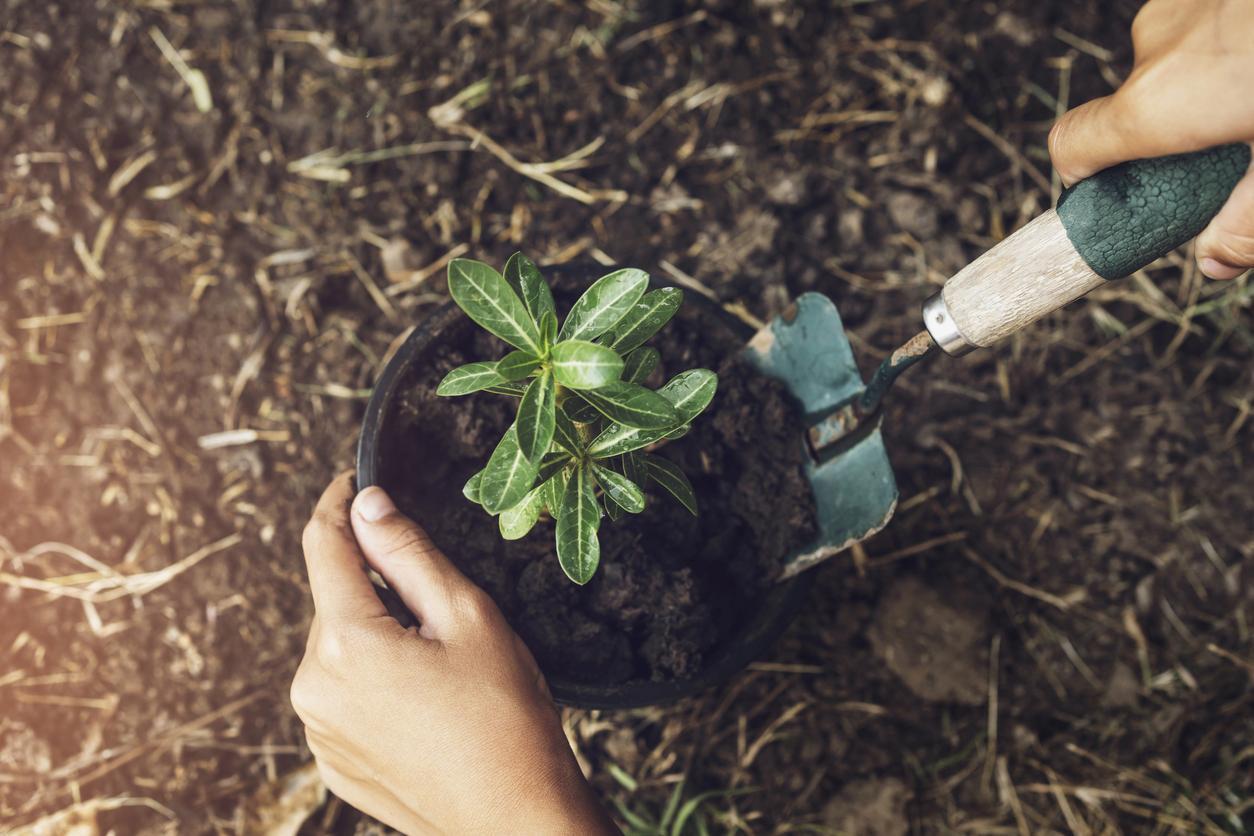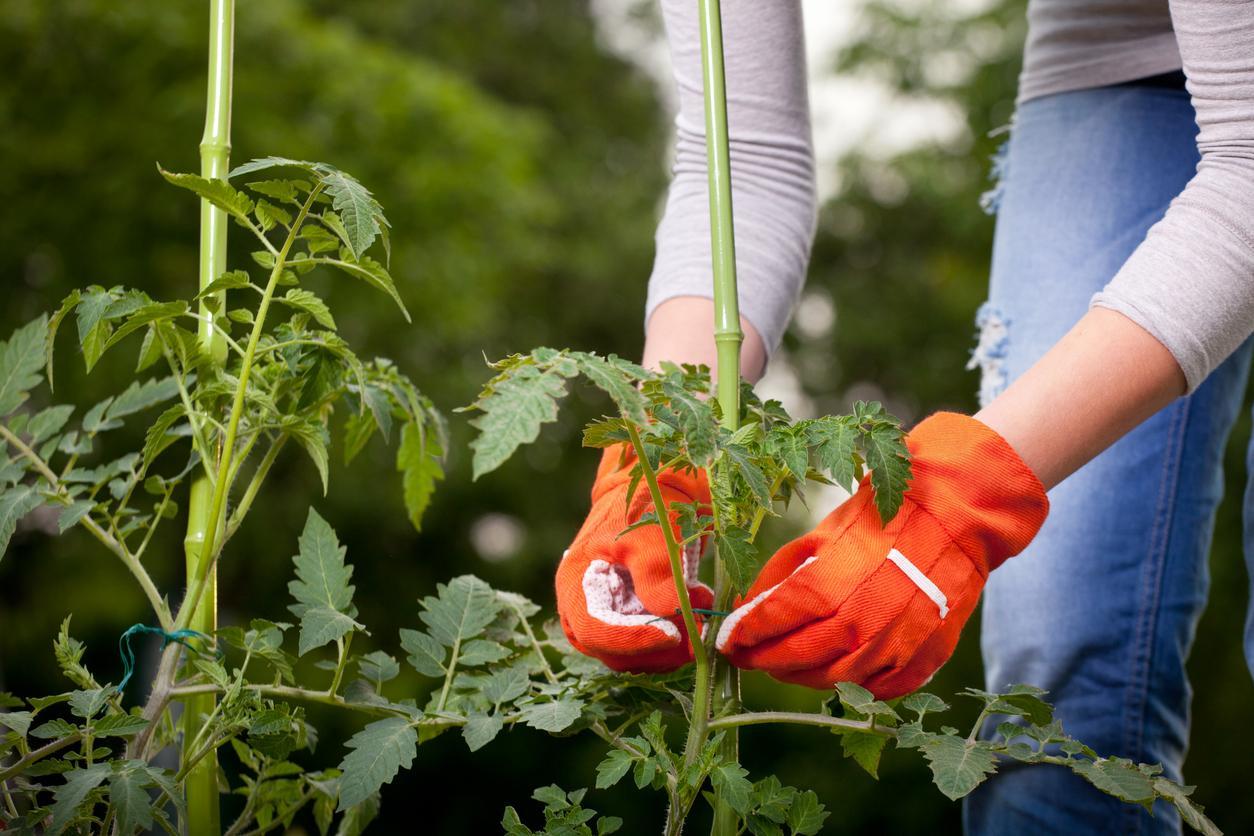Why Do Plant Stems Bend?


Plant stems are not always rigid and upright. In fact, you may have observed that some plant stems bend or lean in various directions. The phenomenon of stem bending in plants can occur due to several factors, and understanding the underlying causes is crucial for effective plant care. Whether you are an avid gardener, a plant enthusiast, or simply curious about the intricacies of plant growth, this article will shed light on the fascinating world of plant physiology and help you foster healthy and resilient plants.
In this article from thedailyECO, we will explain why do plant stems bend? We will explore the different causes behind stem bending and provide insightful solutions to address and prevent this issue.
Insufficient light
Insufficient light can have different effects on plants depending on their stage of growth. Let's explore the consequences of light deprivation on both young and mature plants.
Lack of light in young plants
Lack of light in young plants or seedlings is particularly problematic because they rely heavily on sunlight for photosynthesis and nutrient production. During the early stages of growth, young plants are highly motivated to seek out light sources.
When young plants are placed in an environment where there is inadequate light, they exhibit a phenomenon known as "threading" or "stretching." This refers to their rapid growth in an attempt to elongate and reach towards available light sources. The plant's stems may become thin and elongated as they stretch towards the light, as a survival strategy to maximize light absorption. As a result, young plants become elongated, with thin and weak stems.
This abnormal growth is a consequence of their desperate quest for light. Although seeds typically contain enough energy for early growth, when plants are forced to overgrow in search of light, these reserves become insufficient. Ultimately, the plant's own weight causes its stem to bend, leading to its eventual demise.
If you observe elongated and weak seedlings or young plants, it is crucial to take immediate action. To rectify the situation, you should relocate the plants to a spot where they receive ample light. If that's not possible, installing a plant bulb can compensate for the lack of natural light, providing the necessary illumination for their healthy development.
Lack of light in mature plants
Mature plants can also experience deformations when deprived of sunlight or when it falls irregularly on them. To identify whether a mature plant is affected by insufficient light, examine its stem.
If the crooked growth begins from the base, there is no cause for concern. However, if the stem only bends at a certain height, it is likely a result of light deficiency. This occurrence can even affect plants that seemingly receive adequate light. If a plant is consistently oriented in one direction, branches, and stems in the shaded areas may twist in an effort to reach the sun.
If you are interested in learning more about the role of light in plants, be sure to check out our other article that explains photosynthesis and how it works.

Water stress
Water stress occurs when plants do not receive enough water to meet their physiological needs. In such situations, the plant may experience a variety of negative effects, including the weakening of stems. The availability of water is essential for maintaining turgidity, or the rigidity of plant cells, which is crucial for structural support.
When a plant undergoes water stress, it starts to conserve water by closing the stomata, small openings on the leaves that regulate gas exchange. This closure limits the loss of water through transpiration but also restricts the intake of carbon dioxide, which is necessary for photosynthesis. As a result, the plant's photosynthetic activity decreases, impacting its energy production and overall growth.
In water-stressed conditions, the plant's cells may undergo shrinkage due to the loss of water, resulting in a loss of turgidity. This lack of water pressure within the cells weakens the structural integrity of the stem, making it more prone to bending or drooping under the weight of the plant.
Additionally, water stress affects the production of auxins, a class of plant hormones that regulate growth and development. Auxins play a role in promoting cell elongation, which contributes to the upward growth of the stem. When water availability is limited, the production and distribution of auxins may be disrupted, leading to stunted growth or abnormal bending of the stem.
Water stress can be caused by factors such as drought, excessive heat, insufficient irrigation, or poor soil moisture retention. It is crucial to ensure that plants receive adequate and consistent watering, especially during periods of high heat or drought conditions, to prevent water stress and maintain the strength and rigidity of the stems.
Identifying signs of water stress, such as wilting leaves, dry soil, or slow growth, is important for taking prompt action and providing the necessary water requirements to prevent stem bending and maintain the overall health of the plant.
Overcrowding
If you are observing that your plant is falling to one side and none of the previously mentioned causes seem to apply, another possible reason could be overcrowding due to planting multiple seeds in close proximity.
When multiple seeds are planted closely together, the resulting seedlings may engage in a competitive growth race to gain access to limited light resources. In their attempt to outgrow their neighboring seedlings and secure more light, they may exhibit accelerated and elongated growth, similar to the phenomenon of threading. This rapid growth can lead to imbalances in the plant's structure, causing it to lean or fall to one side.
To mitigate this issue, it is generally recommended to avoid sowing more than 2 or 3 seeds together in a single planting spot. This allows sufficient space for each seedling to grow and develop without excessive competition for light and resources. Once the seedlings start to germinate, it is advisable to remove the smaller or weaker ones, allowing only the strongest seedlings to remain and thrive.
Disease or pests
Fungal infections, such as damping-off or stem rots, can cause decay and deterioration of the stem tissues. As the affected areas become weakened, the stem may bend or collapse under its own weight or environmental pressures.
Bacterial infections can also lead to stem damage and weakening. For instance, bacterial canker or bacterial wilt can cause wilting and stem collapse, resulting in bending.
Insect pests or other herbivores can cause structural damage to the stem, leading to bending or deformation. Stem borers, such as caterpillars or beetle larvae, tunnel into the stem tissues, weakening their integrity. As the pests feed on the inner tissues, they create hollow spaces, compromising the strength of the stem. This can cause the stem to bend or break, particularly if the infestation is severe or concentrated in a specific area.
In addition to physical damage, some pests inject toxins or introduce pathogens into the stem, further weakening it. For example, aphids and certain piercing-sucking insects can transmit viruses that affect the vascular system of the plant, leading to stem damage and bending. Furthermore, root-dwelling pests or pathogens can disrupt the root system's function, impairing nutrient uptake and weakening the overall plant, including its stem.
If you are eager to expand your knowledge about plants and their care, don't miss out on this other article that delves into the topic of black spots on leaves.
How to straighten the stem of a plant
If you have a plant with a bent or leaning stem, there are a few methods you can try to help straighten it. Here are some approaches you can take:
For plants with weak or bending stems, using stakes and supports can provide the necessary stability and encourage straighter growth. Place a sturdy stake in the ground next to the plant, being careful not to damage the roots. Gently tie the stem to the stake using soft plant ties or garden twine. As the plant continues to grow, periodically adjust the ties to ensure they are not too tight, allowing the stem to grow straight while still providing support.
Depending on the severity of the bend or lean, pruning and training techniques can help correct the stem's position. Identify the section of the stem that is bent and make a clean cut just above a healthy bud or node. This will encourage new growth in a straighter direction. You can also use plant clips or soft ties to gently guide the stem towards a more upright position.
If the bending is caused by unstable or inadequate root support, repotting the plant into a larger container with fresh, well-draining soil can help. Ensure the plant is positioned upright and that the roots are adequately covered with soil. As the plant continues to grow in its new pot, it should develop a stronger, straighter stem.
In some cases, stem bending may be a result of the plant's response to inadequate light. Adjusting the light conditions by providing more direct sunlight or adjusting artificial lighting can help the plant grow more upright.
Overwatering or underwatering can weaken plants and lead to stem bending. Ensure that you are watering your plant appropriately based on its specific needs and the moisture requirements of the soil. Maintaining proper hydration can contribute to stronger stem growth.
It's important to note that the success of these methods will depend on the plant species, the severity of the bending, and the underlying cause. Be patient, as it may take time for the stem to straighten and for new growth to occur.

If you want to read similar articles to Why Do Plant Stems Bend?, we recommend you visit our Plant care and cultivation category.







